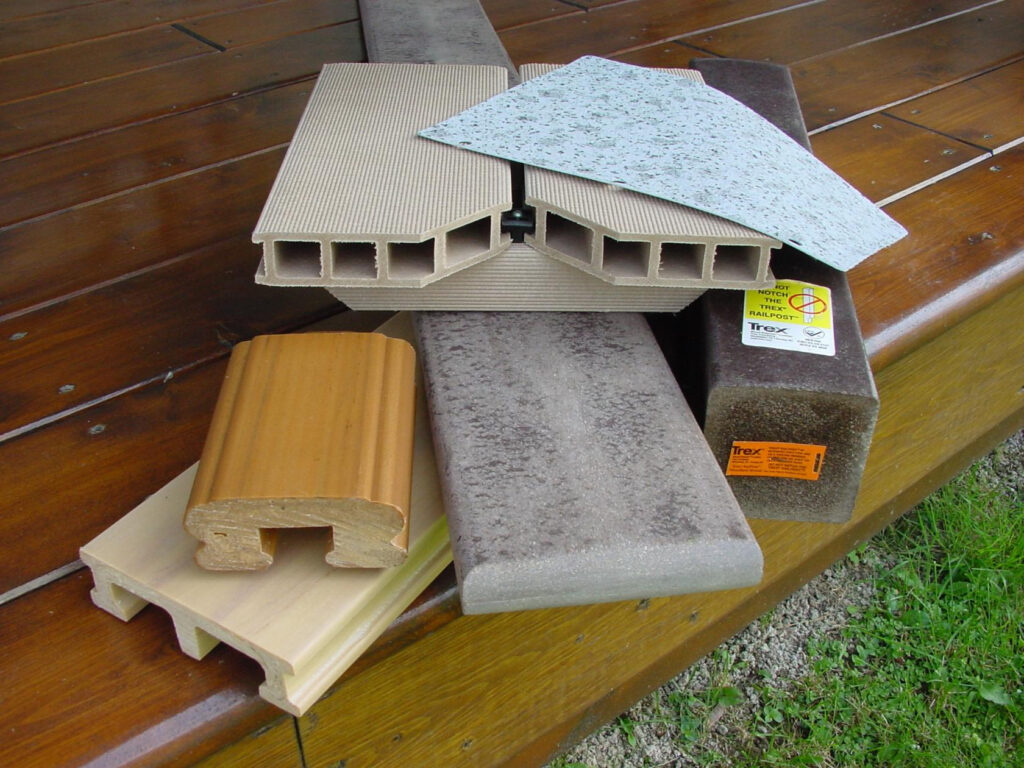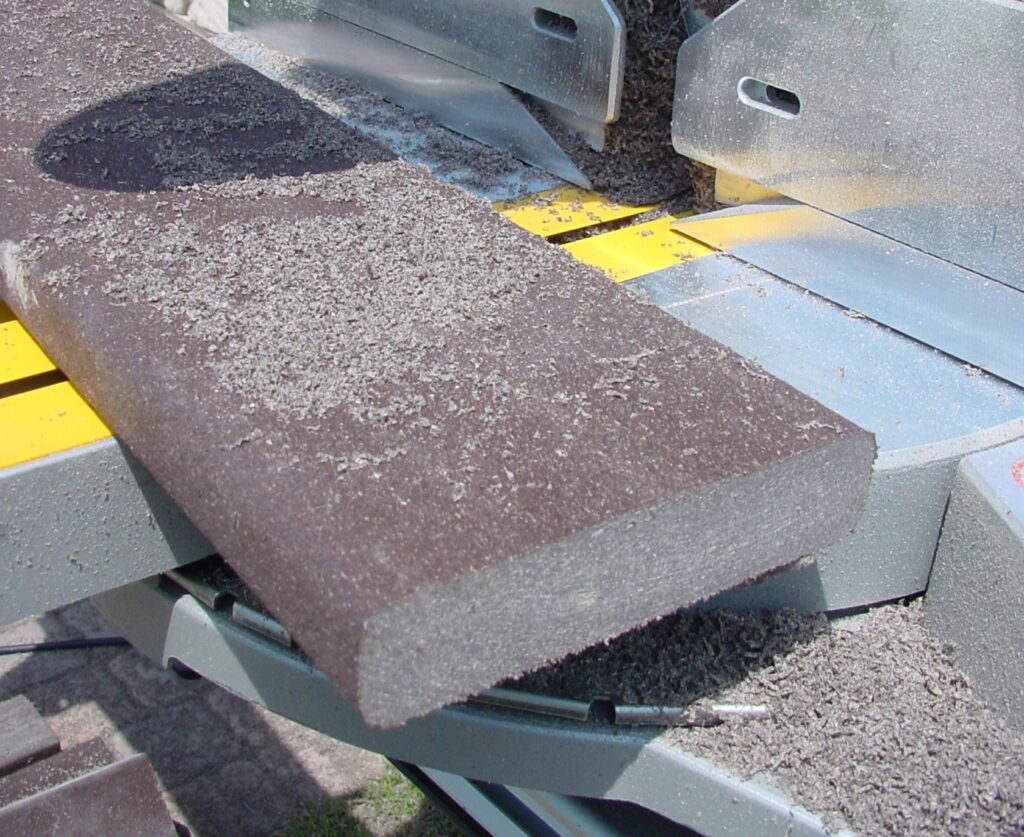As time goes on, I see more and more homeowners interested in reducing home maintenance chores, which is why composite decking is exploding in popularity.
Of all exterior home maintenance tasks, keeping an all-wood deck looking good all the time is one of the biggest, most expensive and most demanding ongoing chores. Synthetic or composite decking material eliminates the need for ongoing finishing and refinishing of deck surfaces, plus it never rots.
Let me show you why I’ve come to like synthetics a lot in the past 20+ years and why you might consider it for your next new deck or deck rebuild.
What is composite decking?
Something called “composite deck lumber” was invented by the Trex company and first came to market in 1996. I used it for the first time a few years later.
All current versions of composites are made from a blend of wood fibres and plastic, usually sourced from recycled shipping pallets and grocery store shopping bags. This is what the term “composite” means, but these days it has come to mean more than just a blend of wood fibres and plastic. It’s loosely used to describe all types of synthetic deck lumber, including 100-per-cent plastic versions.

Strictly speaking, all-plastic lumbers are not composites, but you needn’t get into fine distinctions. All the benefits and drawbacks of true composites apply pretty much across the board to 100-per-cent plastic deck lumber, too.
Everything in the world needs maintenance and composites are no exception. The advantage for you is the maintenance that composites require is minimal — nothing more than an occasional sweeping or washing down.
Once in a while you might have to scrub to remove lichen or moss that develops in shady areas, but that’s no big deal. There’s definitely no need to sand, strip or apply a finish to composites.
Are composites worth it?
While all these advantages are desirable, the higher price tag of composite decking scares some people away. That’s where you need to put things into perspective.
When you choose composites, you’re not just buying a building material. You’re also paying up front to avoid all the labour and deck stain that a wood-deck equivalent gobbles up over the life of the deck.
When considered over time, composite decking is one of the most economical deck options of all. This is even more true now that regular wood lumber has risen so much in price. The cost difference between composites and wood has definitely narrowed, at least for now.

To reduce costs, some composites are made hollow. Other types are solid and of similar thickness and width to real wood lumber. Which one is best?
That depends. Hollow versions cost less, but they also require end caps and other details that make hollow versions look less like wood than solids. If keeping the budget in check is a priority, then go with a hollow product. But for best appearance, I prefer solids.
You also want to properly showcase the beauty of the material, and a hidden deck board fastening system is one of the most important ways to do so.
While it’s certainly possible to use regular, unhidden, face-driven deck screws to secure composite deck boards, this is less than ideal because composite decks look so much nicer when you can’t see any screw heads. Some composite deck lumber profiles are made to use a proprietary hidden fastener system, while others require a separate hidden system.
“If only I’d known how much work this would be,” is a lament I hear often from readers who are several years into ownership of an all-wood deck. If only they’d chosen composites.



